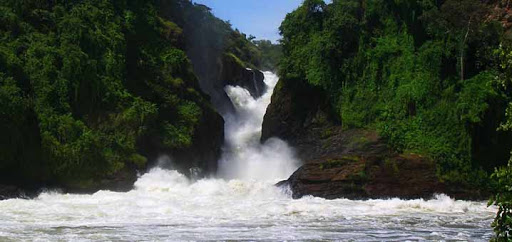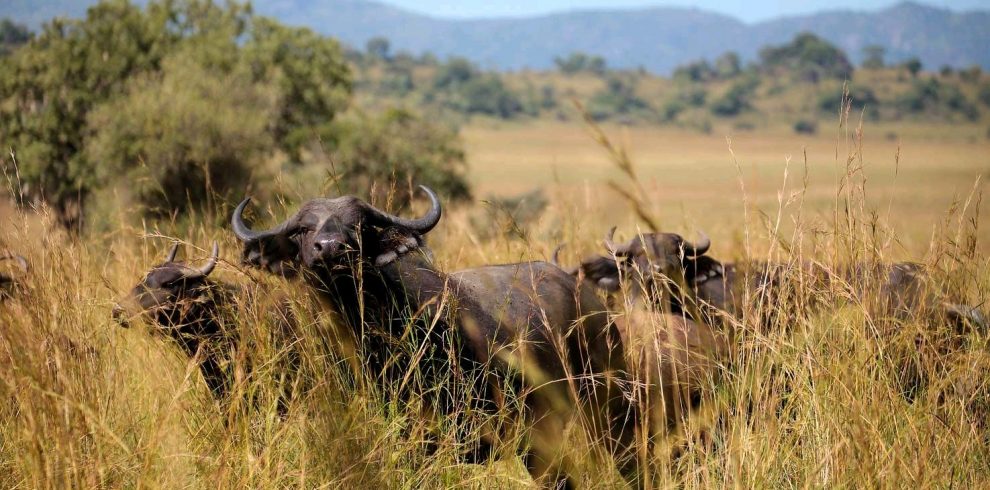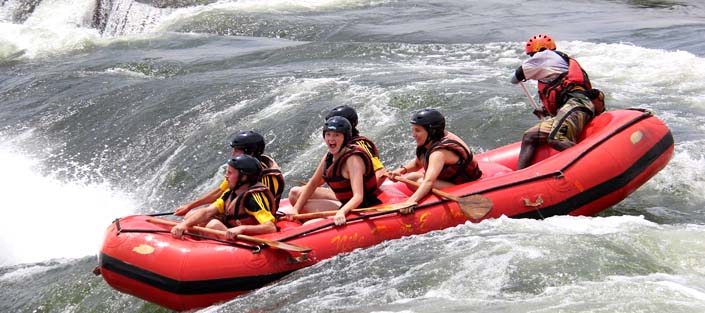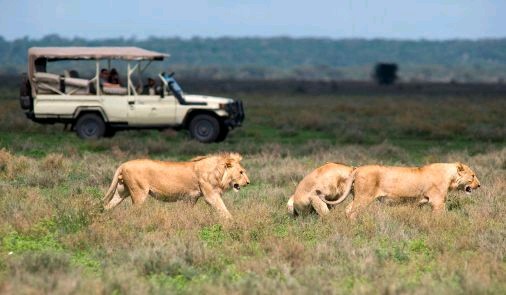Safari Overview
This 3 Day Murchison Falls Safari is one of the best wildlife tours that offers big game viewing in Uganda’s best all rounder national Park. Prepare to be thrilled by Murchison falls itself, a stunning sight where the Victoria Nile squeezes through a 6m gorge to crash onto rocks 45m below. This 3 Days Murchison falls safari goes beyond the traditional 4×4 Road game drives to offer an opportunity for a boat safari to the bottom of Murchison falls, this cruise is very rewarding for wildlife viewing and birdwatching.
Trip Facts:
Private Tour
This 3 Days Murchison Falls Safari will be arranged exclusively for you and will not be shared by others.
Getting There:
This tour starts and ends in Entebbe/Kampala – Fly to and from Entebbe International Airport.
Highlights
- Bird Watching
- Powerful Murchison Falls
- Launch Cruise
- Country side 4x4 Road Trip
- Big 4 Game Viewing among other wildlife Species
Our 3 Days Murchison falls Safari starts with pickup from your place of residence or Hotel in Kampala/ Entebbe. You will meet our safari guide and after a briefing, we will embark on a drive to Murchison falls National Park. This drive is approximately 5 to 6 hours along a smooth Tarmac road with a lunch stop. We then proceed to the park arriving just in time for our scheduled afternoon boat safari from Paraa to the bottom of Murchison Falls, where you can marvel at the power and beauty of the waterfall from down below. Brace yourself to witness some of Africa's giant crocodiles, hippos, buffalo and elephants along this 3 hour launch cruise, bird life to include kingfishers, herons, storks, cormorants among other various species can also be seen. At the end of our launch cruise we hope back into our safari vehicle to continue a short drive with en route game viewing to our booked lodge for dinner an overnight stay.
This second day of our 3 Days Murchison Falls Safari unfolds the unltimate safari adventure, we will enjoy a full day of game viewing in the park exploring all the prime wildlife locations. Early morning after a warm breakfast, we hope into our safari vehicle to start our full day game drives in the northern sector of the park, exploring the various tracks within the Buligi Circuit near the confluence of Albert Nile and Victoria Nile. Among the wildlife species to look out for are elephants, lions, giraffes, buffaloes, warthogs, hyenas, jackals, leopard, antelopes and other wildlife species. You will also have a chance to see some of Murchison Falls' estimated 400 bird species to include; eagles, vultures, hornbills, red throated bee eater, piapiac, silverbird, black headed gonolek among other bird species. At noon, we visit the top of Murchison falls, where a thunderous sound welcomes you just before you are left in awe by the thrilling sight of the powerful falls. We will have our picnic lunches served at top of the falls after which we embark on more game drives in the park. At sun down we return to our lodge for dinner and over night stay which marks the end of day two of our 3 day Murchison Falls Safari.
This morning you enjoy a lazy wake up at lodge then have your breakfast, We then checkout lodge to embark on a drive back to Kampala/Entebbe. This 3 Day Murchison Falls Safari comes to an end when our driver drops you off at your place of residence or Hotel in Kampala/ Entebbe or the Airport for your departure flight.
Request Quote
Price Inclusions
- Park Entry Fees
- 2 Nights safari accommodation on a full board basis
- Transportation in a 4x4 Safari Vehicle with unlimited mileage
- Service of an English Speaking Safari Guide/ Driver
- Fuel
- All mentioned Activities
- All meals as stated in the daily meal plan
- Bottled Drinking water on board
- Government Taxes
Price Exclusions
- International Flights
- Accommodation in Kampala/Entebbe
- Visa fees
- Drinks and Beverages
- Optional Activities
FAQs
Yes, Ziwa Rhino Sanctuary can be added to this safari. Located along the route to Murchison Falls, Ziwa Rhino Sanctuary is a popular stop for tracking rhinos on foot with a ranger guide. This is also the only place in Uganda where you can see rhinos in their natural habitat.
Murchison Falls National Park offers a range of accommodation options for visitors, from budget to luxury lodges and camps. This 3 Days Murchison Falls Safari can be accommodated at the mentioned accommodations but is not limited to just these options
- Fort Murchison: This is an excellent budget lodge just outside the park in the Northern part of the park that offers basic but comfortable accommodation in safari tents, and bandas. The lodge also has a restaurant, a Terrance ,bar, lounge area and a campfire area.
- Pakuba Safari Lodge: This is a mid-range lodge located inside the park on the northern bank of the Nile River. The lodge offers spacious and cozy accommodation in cottages, suites, and family rooms. The lodge also has a restaurant, a bar, a swimming pool,and a conference hall.
- Paraa Safari Lodge: This is a luxury lodge located inside the park on the northern bank of the Nile River. The lodge offers elegant and stylish accommodation in rooms, suites, and cottages. The lodge also has a restaurant, a bar, a swimming pool, a spa, and a golf course.
This 3 Day Murchison Falls safari is available all year round, but some seasons are better than others depending on what you want to see and do. Murchison falls has two rainy seasons: from March to May and from October to November. The rainy seasons are good for birdwatching, as many migratory birds arrive in the park. However, they are also bad for road conditions, as some roads may become muddy and impassable and generally game viewing isn’t good. The dry seasons are from December to February and from June to September. The dry seasons are good for wildlife viewing, as many animals congregate around water sources. However, these month can be hot with temperatures can rise up to 40 degrees Celsius and the air can become hazy.
Yes, it is possible to add chimpanzee tracking experience to this safari. The forested southern part is home to a habituated family of chimpanzees that are open to visitors in Budongo Forest Reserve which is part of Murchison Falls National Park. Tracking chimps in Murchison Falls requires a permit priced at USD that is booked well in advance.
Another option for a boat safari on your 3 days Murhison Falls Safari that is popular among bird watchers is the delta cruise to the Nile-Lake Albert delta. This cruise takes about four hours round trip and departs once daily from Paraa. The cruise takes you along the Albert Nile, where you can see more wildlife and birds, reaching the delta area, where you can see large concentrations of waterbirds, such as pelicans, herons, egrets, storks, and sometimes shoebills.
Preparing well for this 3 Days Murchison Falls Safari is essential, among the items to make it to your checklist are; Sandals for your relaxing time, comfortable closed shoes, Wilde brimmed hat or cap, windbreaker sweater, 1-2 safari pants, 1-2 safari shorts, 3 pairs of sports socks, water proof jacket, 1-2 pairs of short sleeve and long sleeve safari shirts, swimsuit, 1 pair of casual slack or skirt or 2 blouses, belt, underwear, bras and sports bra for rough roads, anti malaria pills (should start medication before arriving to Uganda), anti diarrhea pills, vitamins, antibiotics, insect repellent, sunscreen, shampoo, conditioner, deodorant, toothpaste, toothbrush, hair brush, makeup, a yellow fever vaccination card, passport, printed visa, air tickets, credit cards, cellphone, charger plus power bank. Sunglasses, small torch with batteries
The price for this 3 Day Murchison Falls Safari varies according to the number of people, month of travel and the comfort level preference. We have costed an all inclusive package for different group sizes and comfort levels;
3 Day Murchison Falls Budget Safari
- 2 Pax – USD 845 per Person
- 3 Pax – USD 665 per Person
- 4 Pax – USD 625 per Person
- 5 Pax – USD 555 per Person
- 6 Pax – USD 542 per Person
3 Day Murchison Falls Midrange Safari
- 2 Pax – USD 940 per Person
- 3 Pax – USD 720 per Person
- 4 Pax – USD 695 per Person
- 5 Pax – USD 618 per Person
- 6 Pax – USD 615 per Person
3 Day Murchison Falls Luxury Safari
- 2 Pax – USD 1,258 per Person
- 3 Pax – USD 1,010 per Person
- 4 Pax – USD 940 per Person
- 5 Pax – USD 855 per Person
- 6 Pax – USD 835 per Person
To book this 3 Day Murchison falls Safari, we require a 30% deposit payment of the total quote, this is to cover advance hotel bookings to ensure room availability for our travels dates. The remaining balance can be received one month to your travel date.





